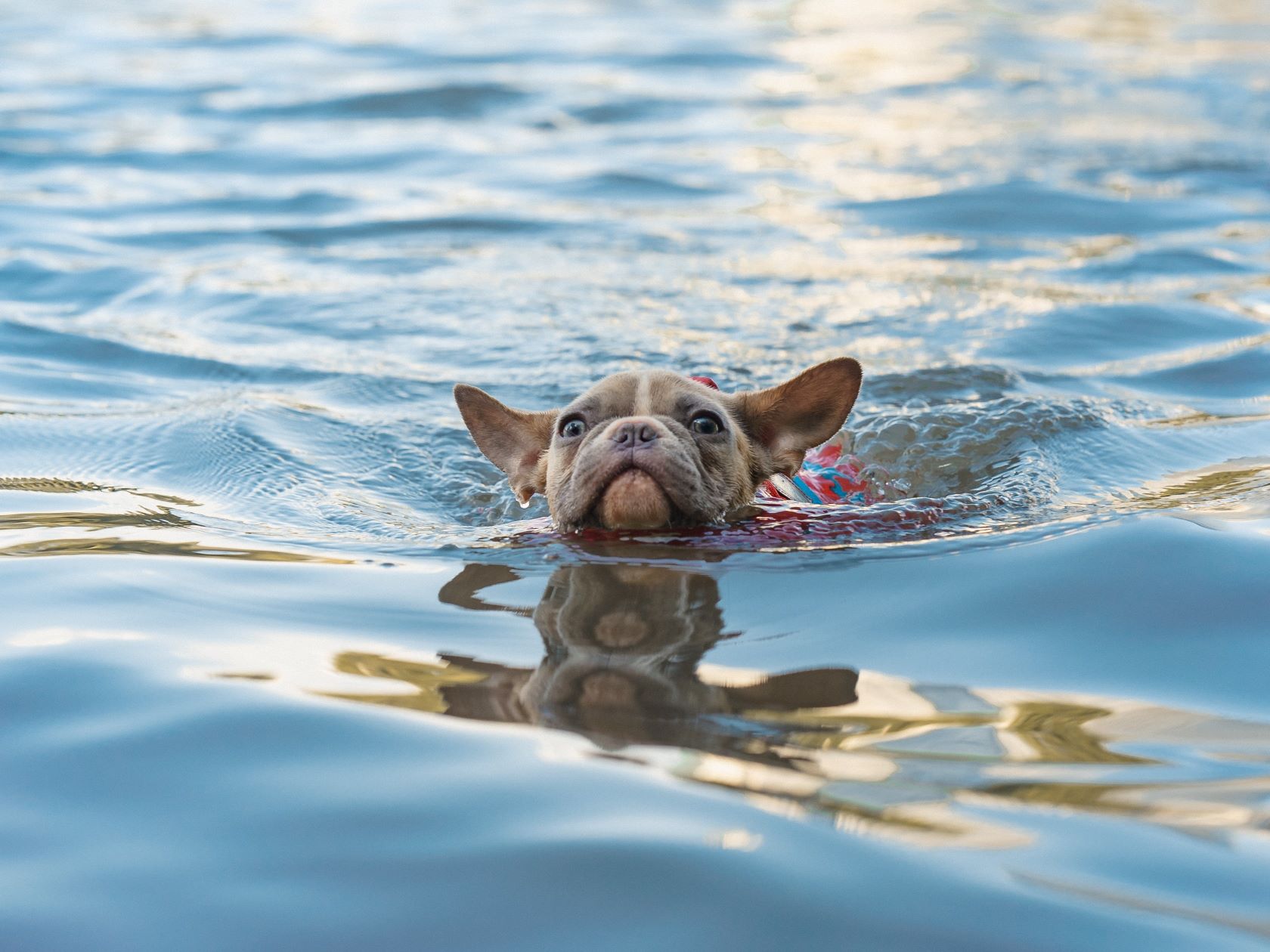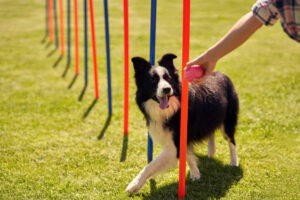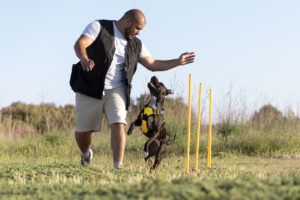Dogs aren’t too often associated with water – but did you know that they’re pretty proficient swimmers?
We’ve talked about training your dogs how to dive before, but training your dogs how to swim is a whole other thing on its own.
That said, swimming is a great way to make them more fit and healthy. Plus, it’s an excellent bonding exercise – your pup will love getting out into the water with you! Swimming is also great for older dogs or those with joint problems, as it’s a low-impact exercise that doesn’t put any strain on their joints.
Unfortunately, not all dogs may be comfortable with the idea, which is why they need training. As long as you train them properly, dogs can learn not just how to do it, but also how to enjoy it.
In this article, we’ll present the best tips and tricks for training your dog how to swim!
Do Dogs Swim in the Wild?
Dogs are strong swimmers in the wild, although they only do it for practical reasons.
For example, species such as the African Dhole and Canadian Sea Wolves are known to like being in the presence of water in the wild. They can use their swimming skills to hunt for prey, escape from predators, cross rivers and lakes, or cool down during hot weather.
But not all wild dogs are prone to swimming, especially if they don’t need to in their direct locations.
It’s also worth noting that when wild dogs swim in the wild, it’s for survival and not for leisure.
Wild dogs have to be able to adapt to their environment to survive, and swimming is just one of the many skills that they need to master. Domestic dogs don’t have that need,
Steps for Training Your Dog How to Swim
If you want to teach your dogs how to jump into the water and swim comfortably, like in this video, you’re going to need to train them properly. Here’s a comprehensive step-by-step breakdown of swim training your dogs.
Introduce your dog to the water
The first phase is to introduce your dog to the water in a safe and controlled environment. Try not to scare them while in the water, and get them comfortable with the idea of getting their paws wet with plenty of rewards.
This is especially important if your dog is skittish in the water. Once they’re comfortable with the water, follow this process.
- Start gradually increasing the depth of the water as your dog becomes more comfortable.
- Use positive reinforcement, such as treats and praise, to encourage your dog to paddle its legs and move its body.
- Use a floating object, such as a floating board, to help your dog stay afloat and to give them something to hold onto.
Teach them basic commands
Once your doggo is more comfortable in the water, you can start teaching them basic commands that will become the foundation of swimming.
For example, you can teach them to always go to you whenever they are in the water with a command like “come.” Be sure to associate the command with your voice and reward them properly once they do it.
Increase the difficulty
Gradually increase the difficulty level by having your dog swim in different bodies of water, if possible, such as a lake or a river. The current will provide a good stimulus and challenge for them to work against.
Just remember to always supervise them and keep them safe when being trained.
Training Your Dogs to Swim Properly
Your dogs are excellent natural swimmers, although they don’t tend to do it for fun. If you want them to enjoy the water, you’ll need to train them properly – which we helped you within this article.
When training your dogs, just remember to properly introduce them to the water, teach them basic water commands, and gradually increase the difficulty until they master it.
Your dogs can do more incredible things than swim. For more pet knowledge, visit our PetFitness blog!







